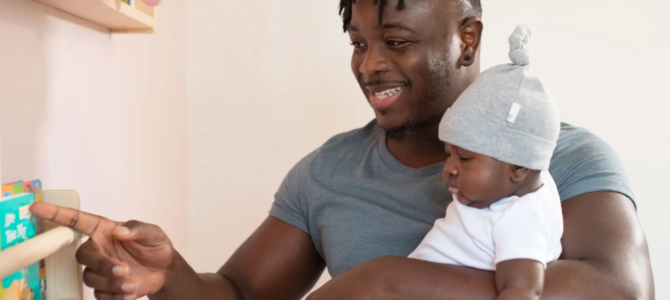
“People say, ‘I just need to organize my life like this and make the right choices,’” Claire Cain Miller quoted from feminist author Kirsten Swinth in The New York Times recently. “Nobody’s saying, ‘I’m making choices in an impoverished world.’” The article for the New York Times’ “The Upshot” purports to examine the challenges parents face in balancing work and child-rearing.
Cain Miller operates from the premise that the United States — one of the wealthiest countries in the history of the world — is “impoverished” in parental choices. From the author’s view, parents’ limited options are due to institutional policy deficiencies, such as a lack of government-provided parental leave, meager paid leave from employers, and “gendered expectations.” If it weren’t for these “structural limitations,” the implied argument goes, American parents would face a rich selection of choices for work-life balance.
“Three-quarters of mothers are employed,” she writes, “But many feel forced to make painful decisions, like leaving their child in inadequate care, or working in scaled-back jobs they say they wouldn’t have chosen under different circumstances.”
To support her case, Cain Miller leans on a study on preference formation as it relates to these “institutional constraints.” The study surveyed “a representative U.S. sample of young, unmarried, childless individuals.” In other words, they asked a bunch of young people, none of whom are parents or even married, to choose responses generated from hypothetical scenarios that don’t describe their actual experiences.
The authors conclude, unsurprisingly, that constraints produced by these “traditionally gendered” workplaces shape work-family preferences, and removing those constraints through “supportive work-family policy interventions” such as “paid parental leave, subsidized childcare, and workplace flexibility” produces more egalitarian family structures. It’s hardly a revelation that when single, childless millennials are asked what they’d do if they weren’t single and childless, they choose life models favored in pop culture and higher education. But actual parents’ perspective is drastically different.
Government ‘Choices’ Ignore Parental Sex Differences
Critically, the birth of a child makes the inherent differences between the sexes impossible to ignore — differences egalitarians vigorously deny. Mothers generally nurture; fathers generally lead, balance the nurturing with discipline, and provide the bulk of material needs. Many parental duties overlap, but distinctions produce specialization between parents that’s good for kids.
Mothers’ natural desire of mothers their own children emerges in polling: Mothers who have kids under 18 prefer to stay home at 56 percent compared to 39 percent of those who don’t, and they prefer working outside the home at a rate 19 points lower than those women without kids at home. By contrast, three in four fathers still overwhelmingly prefer to work outside the home.
Yet the authors contend that if we could only have more public intervention in child care, we could “finish” the “gender revolution,” and parents would be able to choose more freely the work-life arrangements the left advocates. Ample evidence indicates this is not the case, not just because men and women are different, but because the government can’t provide opportunities. It can only change, restrict, and redistribute them.
I don’t know if Cain Miller is a mother, but she does get one thing right in dropping this observation from labor historian Alice Kessler-Harris: “Choice can be understood only within the framework of available opportunity.” The question, then, is where does opportunity originate, and how do we get more of it? Leftist thinkers believe it comes from government mandates and wealth transfers — direct cash payments or new programs. This function is key to the gender and parenting “revolution” Cain Miller and her ilk are seeking.
Leftists Want More Policies that Have Failed Poor Moms
Kirsten Swinth, whom Cain Miller quotes extensively, told The Atlantic she relied heavily on the work of welfare-rights activists for her book “Feminism’s Forgotten Fight,” and that their efforts and feminist efforts were connected. “You can make a feminist case [for guaranteed income],” Swinth said.
But how has welfare worked out for poor mothers, for whom feminists show particular concern? Has it offered them more choices? More freedom?
Robust wealth transfer programs are likely to lock parents into certain choices. In fact, the poorest quintile of Americans don’t technically need to work because the government provides roughly $51,000 worth of resources to them every year, $34,093 of it in “money income,” up from $3,070 in 1965. The rest comes from “food stamps, Medicaid, the portion of Medicare going to low-income families, Children’s Health Insurance, the refundable portion of the earned-income tax credit, at least 87 other means-tested federal payments to individuals,” according to Phil Gramm and John F. Early writing in the Wall Street Journal.
All these resources are meant to provide “choice,” yet the poverty rate has virtually held steady for the last half-century. It seems the government is particularly good at offering the choice to escape poverty — if by poverty one means dependence on the government for subsistence. Gramm and Early explain that 50 years after the war on poverty began, the lowest-earning fifth of families were 37.1 percent more likely to have a prime working-age head who doesn’t work than middle-income families, up from just 5.4 percent.
Cain Miller and other liberal feminists believe more wealth transfers in the form of guaranteed benefits will produce more freedom for parents and mothers in particular, but history has shown it does the opposite. The rate of children born out of wedlock has risen steeply since the mid ’60s, from 7 percent to more than 40 percent, suggesting welfare is at least partly to blame for the steep upward curvature; the rise was much slower before that.
How has that worked out? Single mothers’ socioeconomic choices are far more restricted; 37.1 percent of single mothers cannot support their families by their income alone, compared to just 6.8 percent of married families. Yet we are to believe more government subsidies such as universal basic income will expand choices for the disadvantaged?
Marriage Produces More Wealth and Choices
As Joy Pullmann wrote regarding the GOP-led push for Social Security-funded parental leave:
[Government] checks don’t kiss mom pink or take the baby for a nighttime walk so mom can get a break, and checks don’t change diapers, fix cribs and tricycles, play tickle games, warm up the car on cold mornings, or read picture books. … Children need their own biological fathers married to their own biological mothers and committed to personally keeping that family safely afloat through hell or high water.
The most economic freedom, and thus freedom in parenting decisions, flows to married, two-parent households. According to a 2005 study that followed married couples for several decades, married couples’ year over year increase in wealth is nearly double that of singles, at roughly 14 percent. It outstrips cohabitors too, according to Jay Zagorsky, who authored the study’s report.
Hard work, financial responsibility, and foresight buy choices, a fact to which I can personally attest. But not just any stream of checks will do, as the war on poverty has shown us. Far from promoting independence and allowing people “to develop and use their capacities,” as Lyndon B. Johnson promised, those checks lock people into government dependence.
Government Programs Foster Dependence, not Choice
Just like the anti-poverty programs, government-run parental leave is a choice virtually every working American would be locked into. It discourages people from saving for their own leave, just like Social Security has discouraged people from saving for retirement. Perhaps worse, employers will quickly shed private leave policies because the government has claimed that responsibility; they’ll be less likely to afford an independent policy anyway due to payroll tax hikes.
Everywhere government involves itself, it either makes things more expensive, limits choices, or both. Its subsidization of student loans directly raised the sticker price of tuition. Its regulation of the insurance market exploded costs and restricted health care options for millions, a consequence massive subsidies haven’t alleviated. “Big-box” government schools have crowded out other education models, leaving private school as the elite option, out of reach for most middle-class households and families begging for vouchers and charter schools from a government that shouldn’t have gotten involved in the first place.
Not to mention, studies have shown government-mandated parental leave backfires on working mothers, lowering their earnings long-term and even the number of children they’re likely to have. Again, less wealth equals fewer choices.
So are parents’ limited choices a result of structural inequities inherent to American capitalism and traditionalism, or due to a combination of their own decisions and government meddling? If we are to think of child-rearing decisions as a national issue, the chief problem we face is two-fold: a drop in work ethic and responsibility and a rise in dependence, each far more likely to trap parents into less favorable decisions.
Victim Mentality Is Great for Revolution, Bad for Parents
Yet Cain Miller partially blames these declining values for keeping Americans from completing the gender revolution. “Research has found that when Americans in particular are asked to think about daily actions as choices, it decreases their support for policies that support the public good and their empathy for people with fewer advantages,” she writes. In other words, when people don’t feel like victims, they’re less likely to support government transferring their wealth into someone else’s pockets.
It seems what Cain Miller and other liberal feminists want is more dependence on government, which limits choices and people’s ability to take control of their situations. Her mentality is that people should see themselves as victims, because victims acknowledge the “structural inequalities.” But people who believe themselves to be victims are also the least likely to seize opportunities when they arise and to employ the grit it takes to improve their work-life situations.
The reason liberals want people to see themselves as victims is not to help them better their lives, but so they can help the left “finish the revolution.” Satisfied people can’t be agitated to transform society.
That revolution is not pro-parental choice, however. It’s an effort to stuff parents into an egalitarian ideal that grates against the beneficial distinctions between mothers and fathers that naturally produce specialization within the family. As difficult as it can be for families to make the best of their situations, the truth is that government programs don’t create more choices, they limit them.









